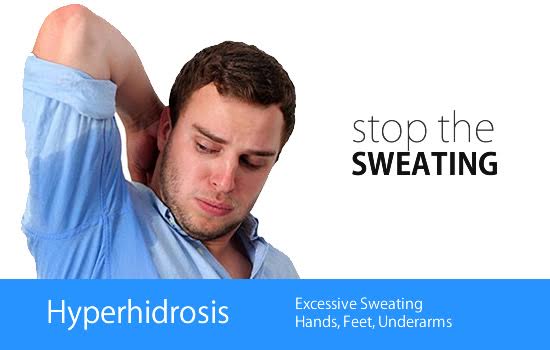 DD HEALTH: EXCESSIVE SWEATING AND TREATMENTS
DD HEALTH: EXCESSIVE SWEATING AND TREATMENTS
Hyperhidrosis is a common condition in which a person sweats excessively.
The sweating may affect the whole of your body, or it may only affect certain areas.
Commonly affected areas include the:
armpits
palms of your hands
soles of your feet
face and chest
groin
Both sides of the body are usually affected equally – for example, both feet or both hands.
The sweating doesn’t usually pose a serious threat to your health, but it can be embarrassing and distressing. It can also have a negative impact on your quality of life and may lead to feelings of depressionand anxiety.
Over 2pc of the Irish population have a problem with excessive sweat and feel it has a negative impact on their lives.
What is excessive sweating?
There are no guidelines to determine what “normal” sweating is, but if you feel you sweat too much and your sweating has started to interfere with your everyday daily life, you may have hyperhidrosis.
For example, you may have hyperhidrosis if:
* you avoid physical contact, such as shaking hands, because you feel self-conscious about your sweating
* you don’t take part in activities, such as dancing or exercise, for fear they will make your sweating worse
* excessive sweating is interfering with your job – for example, you have difficulty holding tools or using a computer keyboard
* you’re having problems with normal daily activities, such as driving
* you’re spending a significant amount of time coping with sweating – for example, frequently showering and changing your clothes
* you become socially withdrawn and self-conscious
When to see your GP
Visit your GP if you feel that your sweating is interfering with your daily activities, or you suddenly start sweating excessively.
Many people with hyperhidrosis are too embarrassed to seek medical help or believe that nothing can be done to improve it. But treatment is available.
Also visit your GP if you are having night sweats, because it can sometimes be a sign of something more serious. Your GP will usually be able to diagnose hyperhidrosis based on your symptoms, although occasionally you may need blood and urine tests to check for an underlying cause (see below).
What causes hyperhidrosis?
In many cases, hyperhidrosis has no obvious cause and is thought to be the result of a problem with the part of the nervous system that controls sweating. This is known as primary hyperhidrosis.
Hyperhidrosis that does have an identifiable cause is known as secondary hyperhidrosis. This can have many different triggers, including:
pregnancy or the menopause
anxiety
certain medications
low blood sugar (hypoglycaemia)
an overactive thyroid gland (hyperthyroidism)
infections
How hyperhidrosis is treated
Excessive sweating can be challenging to treat and it may take a while to find a treatment right for you.
Doctors usually recommend starting with the least invasive treatment first, such as powerful antiperspirants. Lifestyle changes may also help, including:
wearing loose and light clothes
avoiding triggers, such as alcohol and spicy foods, that could make your sweating worse
wearing black or white clothes to help minimise the signs of sweating
If this doesn’t help, you may be advised to try treatments such as iontophoresis (the affected area is treated with a weak electric current passed through water or a wet pad), botulinum toxin injections, and even surgery in a few cases.
Hyperhidrosis is usually a long-term condition, but some people experience an improvement with time and the treatments available can often keep the problem under control.
Who is affected?
Hyperhidrosis is common. It’s been estimated to affect between one and three in every 100 people which means there are likely to be hundreds of thousands of people living with it in Ireland.
Hyperhidrosis can develop at any age, although primary hyperhidrosis typically starts during childhood or soon after puberty.
For more information, go to www.sweating.ie








